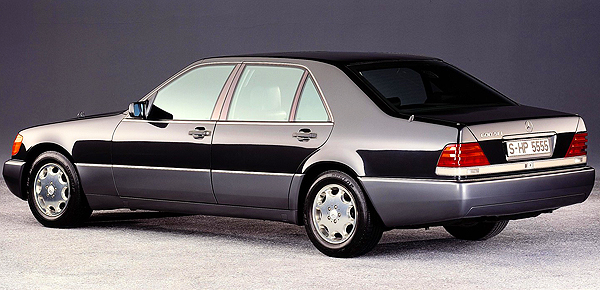A UK-market 1989 Mercedes 300SL with 5-speed manual is desirable because this version was never sold in the United States. But is it worth importing? (Photo credit:Classic Benz Ltd UK)
If you’re a car enthusiast like we are at Classic Cars Today Online, you may have grown to admire specific car makes and models sold in other countries that were never available in America. Or maybe before living in the United States, you experienced one firsthand on foreign soil.
And perhaps you’ve considered how nice it would be to have that one car other folks in your car club won’t have. To name a few examples, cars we’ve always wished for are a 1986-89 Mercedes 300SL with a 5-speed manual transmission, a 4-door Land Rover Defender, or a pre-2009 model Nissan Skyline GT-R…none of which were ever sold in the United States.
Recently we began investigating how practical it would be to import that special car ourselves. Basically, importing any vehicle 25 or more years old is relatively simple and importing anything newer than 25 model years old can be very difficult, time consuming, and expensive. In other words, not something to get into without first consulting a vehicle importer or attorney experienced on the subject.
Because Department of Transportation (DOT) and National Highway Traffic Safety Authority (NHTSA) guidelines on this subject can be a dry and confusing read, we consulted several registered vehicle importers and an attorney with expertise in the field (Lance Beyer) for help clarifying some questions.
CARS 25 OR MORE YEARS OLD
Federal rules allow any car on U.S. roads 25+ years old to be registered as a “classic”. As such, they are no longer required to meet emissions, crash, or safety standards applied by the EPA and DOT that were effective the model year they were built.
This rule benefits those looking to import 25+ year old cars from any other country as well. Strictly because of age, any car being imported would not need to be modified as long as headlights work and the vehicle is demonstrated to be roadworthy. So a 1979 Russian-built Lada never sold here, or a 1985 VW Beetle from Mexico would not require specific approval.
Note that it sometimes difficult to find parts for imported alternate-market vehicles, or technicians able and willing to work on them.
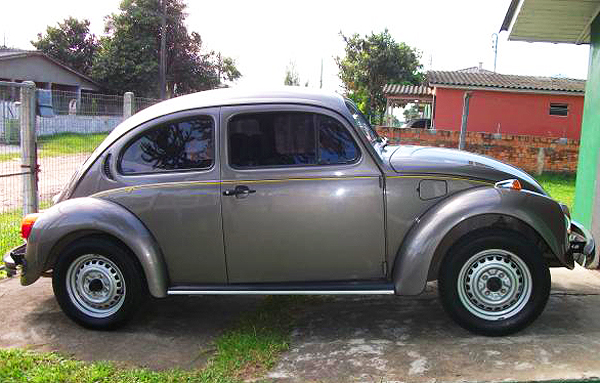
Because it’s over 25 years old, this 1985 Volkswagen Beetle originally sold in Mexico would be easily importable into the United States. (Photo credit: Mauricio Garcia)
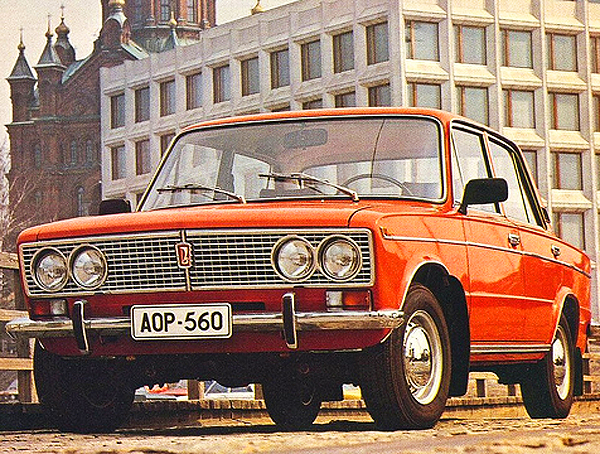
Even though it was never built for the U.S. market and would never pass any emissions or crash tests, this 1979 Russian-built Lada would be importable into the United States. (Photo credit: Boris Plugov)
However, according to attorney Lance Beyer, there can still be problems when a car is unloaded at the dock. “Customs decides if the car meets the criteria. I often run into problems with this if the cars have been really nicely restored and do not look old. Convincing a Customs agent of authenticity isn’t fun.”
He emphasizes state motor vehicle agencies should be checked with first. Some states may require inspection before allowing the vehicle to be titled and registered. “What that means is that for some states your vehicle might need some “adjustments”: lights, odometer/speedometer etc. Some states will also require an emissions inspection. Even though vehicles may be exempted from EPA’s import requirements, the states get to do what they want.”
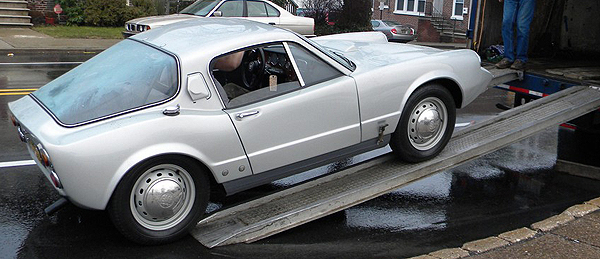
Once clearing customs, cars like this 1967 Saab Sonnett may still be required by individual states to pass through motor vehicle inspections and minor modifications before they can be titled and registered. (Photo credit: D. Jaeckel)
IMPORTING VEHICLES UNDER 25 YEARS OLD
Vehicles under 25 years old must be brought up to U.S. emission and safety standards set for the original model year of the vehicle. This means the vehicle must be equipped with U.S.-specification airbags, knee bolsters, lights & lenses, seat belt buzzers, door reinforcement crash beams, and more. Then it must pass separate emissions cleanliness tests.

Importing a vehicle under 25 years old, such as this 2001 Land Rover Discovery, would require a great deal of modifications. (Photo credit: Bjorg Leonard)
If the manufacturer of the vehicle you’re looking to import originally crash certified and sold the same model in the United States, the DOT will usually accept that as prior precedent that your vehicle (now modified to U.S. standards) would be equally safe in an accident.
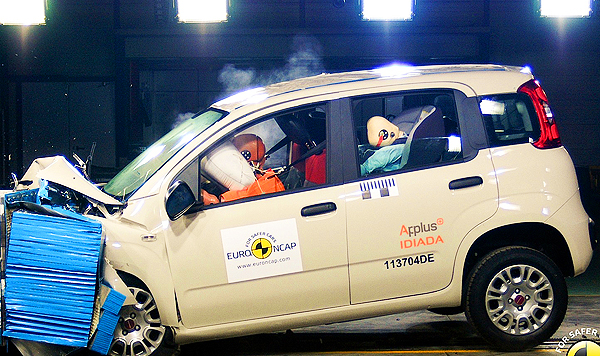
If you want to import a newer car to the United States that was never certified for U.S. sale by the manufacturer (Fiat Panda shown), you must bear all costs of DOT crash testing yourself. (Photo credit: Euro NCAP)
But if the model of car you want to import was never certified for sale in the U.S., then you will bear the responsibility of proving crashworthiness. Translated, this means you will need to provide three modified subjects for crash testing, and bear agency testing costs (typically $200-$400 thousand). Not practical for an individual at all.
Intended Use Doesn’t Change Requirements
Attorney Beyer comments, “Intended use of the vehicle is not relevant at all. A vehicle is a vehicle, and your 20-year-old show Ferrari must meet all of the same emission and safety standards as your five-year-old VW would. A lot of military service people being deployed back to the United States want to bring the cool cars they bought overseas back with them. Usually the answer they receive is no.”
He continues, “The vehicle must be shown to be capable of being modified to meet U.S. safety standards. Not only does the importer have to show the compliance of the ‘regular’ standards (lights, controls/displays, brake systems), he must also address crash worthiness standards involving as air bags. Proving this requires crash data, which sometimes can be based on the manufacturer’s tests if they sold a U.S. certified model originally
Even if there is a similar unit, when the petition is published, the manufacturer can dispute the claims that the foreign unit can be modified, and that leads to more engineering efforts: i.e. expensive. If you pass the US DOT hurdle, then there’s still emission standar.ds. The Federal Test Procedure for emission tests is much more intensive that going through state inspection lines – it takes at least two days test and can cost several thousand dollars.”
Do Your Homework
A vehicle importer I spoke to cited a recent case where a customer didn’t do their homework first, and faced problems importing a vehicle from Europe as a result. “I just got a call from some folks who have a Mercedes 600SEL that is sitting in a container with their personal belongings, because they did not figure on the DOT/EPA requirements. There is quite a bit of work that needs to be done on this particular model to bring things up to U.S. standards. Because it has a 12-cylinder engine, the amount of emissions work that needs to be done will bring the cost of modifications to twice the value of the car. They’ll wind up abandoning it at the pier, most likely.”
Attorney Beyer also attributes most of the problems he sees to vehicle owners not realizing how involved regulations are. “I could tell you horror stories of cars that came here without proper homework, and worse – sometimes the owners get some really bad information. So when the DOT and/or EPA go to examine the paperwork, there’s a problem. Sometimes there are also issues when a State refuses to issue title/registration based upon foreign documents and lack of U.S. DOT or EPA approvals.”
EXEMPTIONS FOR VEHICLES UNDER 25 YEARS OLD
The DOT does have a “show/display” exemption that limits vehicle use to 2,500 miles per year that must be applied for and approved in advance. These exemptions are reserved for vehicles with extremely unique historic or engineering characteristics. It is not an easy exemption to obtain, and very few are granted.
According to U.S. National Highway Traffic Safety Authority (NHTSA) wording, if you wish to import such a vehicle for minimal use, show or display, you “must apply to NHTSA for permission to do so and establish that the vehicle is of such historical or technological significance that it is in the public interest to show or display the vehicle in the United States even though it would be difficult or impossible to bring the vehicle into compliance with the Federal motor vehicle safety standards. This provision is intended to facilitate the importation of historically or technologically significant vehicles that were never certified by their manufacturer for sale in the United States.”
The importer commented that this translates to a very slim chance for cars under 25 years old. “’Did the Queen of England use this vehicle?’ is often used by NHTSA as a litmus test for historical significance. One car that was actually accepted was Mikael Gorbachev’s armor-plated Mercedes limo. “
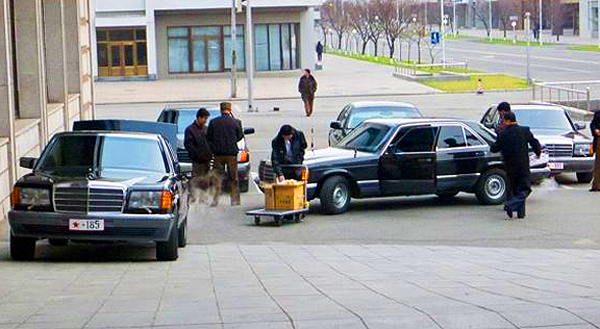
These 1990s-vintage Mercedes S-class armored cars used to transport North Korean leaders might be allowed into the U.S. under the U.S. Department of Transportation historically unique exemption. (Photo credit: E. Loh)
Another importer I spoke also felt getting an exemption is not likely “unless a famous person owned it or the car has a million dollar value.”
An exception where blanket approval was once given to an importer for mass importation of one model into the U.S. was the Nissan Skyline GT-R, a high-performance sports car not sold in the U.S. before 2009.
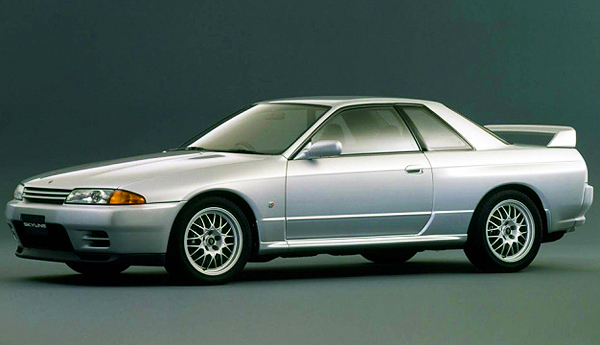
Prior generation 1990s Nissan Skylines never sold in the United States were granted entry into the U.S. for resale only after the importer supplied three for DOT crash test certifications. (Photo credit: Nissan Motor Company)
After the importer had petitioned the DOT that the Skylines were capable of being brought into U.S. safety compliance, they supplied necessary “improved” vehicles for crash tests by NHTSA, which okayed the results. Years later after some factual issues were subsequently questioned, the DOT withdrew acceptance of later model Skylines.
DO RIGHT-HAND-DRIVE VEHICLES NEED TO BE MODIFIED TO LEFT-HAND DRIVE?
For cars 25 years or older, no. For newer cars, importers feel it is a risky proposition no matter what. One commented, “Modifying right hand drive on newer cars depends. The Office of Vehicle Safety Compliance at NHTSA put out a newsletter for Registered Importers about two years ago that basically said no new petitions for import of a vehicle would be considered if the vehicle was right-hand-drive, or had been converted from right-hand-drive. I’m going to say that if the vehicle was being imported for use by mail carriers, there might be an exemption, but it would be tough.”

Right-hand-drive vehicles under 25 years old are not allowed into the U.S. Possible exemptions are only for mail carrier use only. (Photo credit: G. Sullivan)
TYPICAL COSTS TO IMPORT AND MODIFY A VEHICLE
Charges from shippers I contacted ranged from $3,500 to $5,500 from Europe to the East Coast and from $4,500-6,000 from Japan to the West Coast.
As well, there is a $500 entry fee plus a 2.5% United States duty tax .
In most cases, modification costs to bring one vehicle up to U.S. standards average around $15,000.

